Lamborghini’s CEO Talks Electrification, Synthetic Fuels, and the New LMDh Race Car
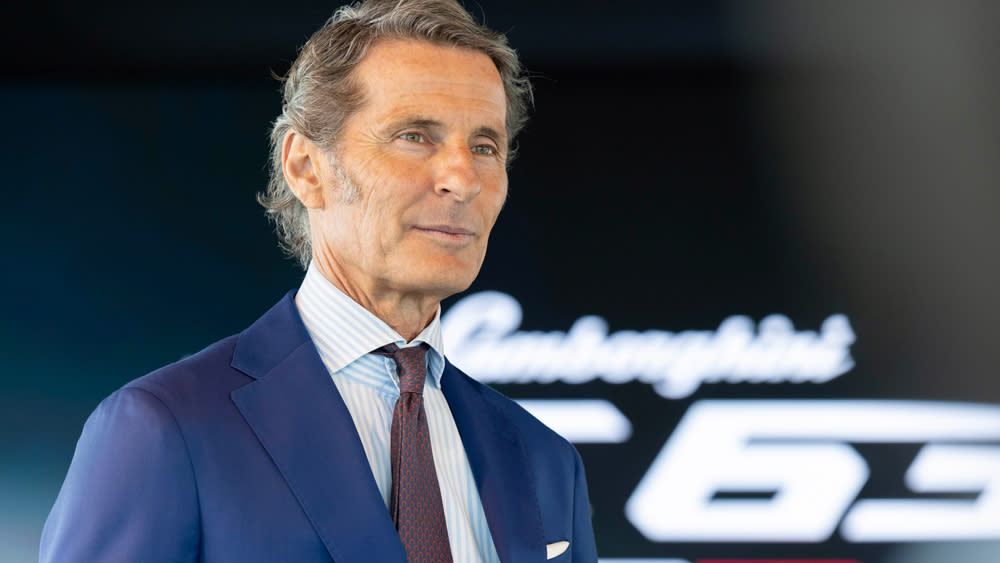
- Oops!Something went wrong.Please try again later.
The air of anticipation was as palpable as the hot summer evening, while a growing throng lined up for entry to the debut of Automobili Lamborghini’s flagship dealer showroom in Irvine, Calif., on July 18. Here, in the heart of the automaker’s most important market, a number of milestones were being celebrated.
Not only were Lambo loyalists drawn to 44 Auto Center Drive, the new home for Lamborghini Newport Beach, to celebrate the 60th anniversary of the Raging Bull, they also came for the West Coast premiere of the innovative Revuelto. Successor to the Aventador, the roughly 1,000 hp plug-in hybrid supercar from Sant’Agata Bolognese features the unlikely but inspired combination of a naturally aspirated V-12 engine and three electric motors. Its historic place in the Italian marque’s pantheon was amplified by a collection of 12-cylinder models ranging from the 400 GT and Miura to the more recent Sián and Countach LPI 800-4.
More from Robb Report
Wrecked Your Supercar? Here's Everything You Need to Know About Getting It Fixed.
This New Book Chronicles Lamborghini's Rich History, From the Countach to the Revuelto
Lamborghini's New LMDh Prototype Racer Will Take on Le Mans Next Year
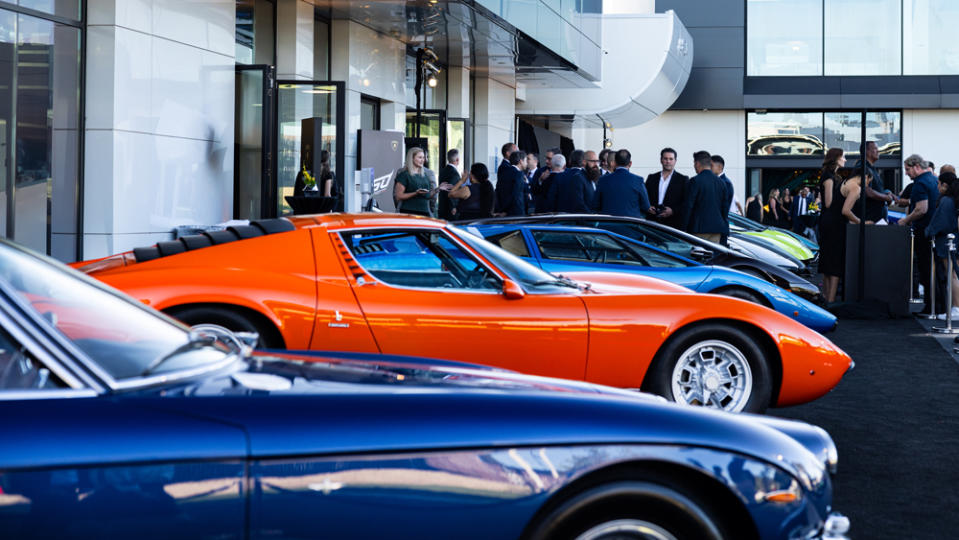
On hand for the ribbon-cutting ceremony was an elite cadre of Lamborghini executives, including global CEO Stephan Winkelmann. Before the invited VIP clients and guests were let in, we spoke with Winkelmann about corporate strategy for the next decade, the new LMDh entry for endurance racing, and what founder Ferruccio would have made of it all.
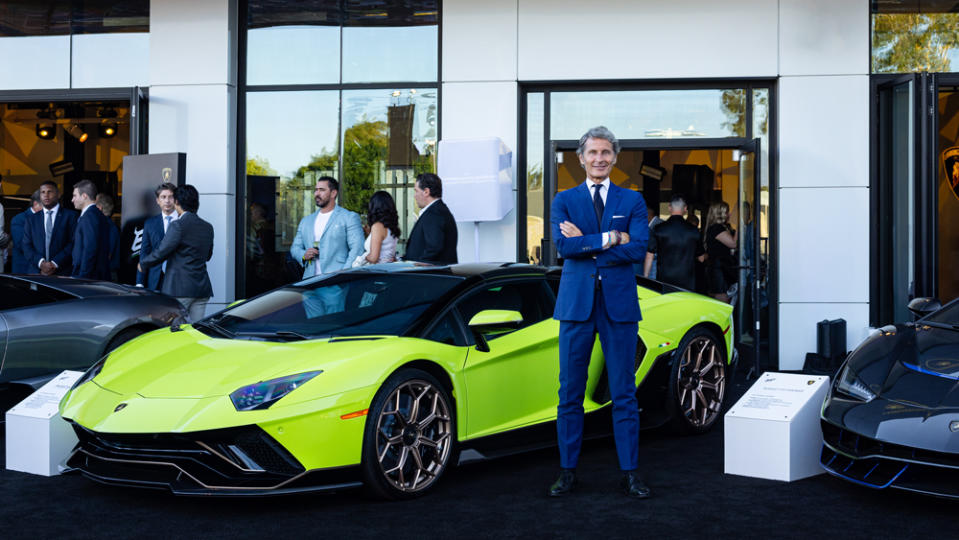
As Lamborghini celebrates its 60th anniversary, how are you preparing for its future?
What I can give you as an insight is what will be happening in the next decade. We are in a very important phase of the history of our company, because we are in the transition of [solely] internal-combustion-engine cars into our first hybrid cars. And this will be the first step of our strategy, which is called Direzione Cor Tauri, where we are hybridizing all of the lineup. The Revuelto is the first one, and then, next year, the Urus will come, and then the follower of the Huracán. By the end of the decade, we will have a fourth model, which will be our first fully electric car—a daily-use car, not a pure super sports car.
How open is Lamborghini to exploring power-train alternatives other than pure electrification?
After 2030, we will see how things are developing, and we are prepared to go both ways; to stay hybrid and maybe have synthetic fuel . . . or, for the super sports car, to go fully electric. This depends on decisions which are going to be taken by us, for sure, and by the legislators, but we will always keep the promise to our customers that, whatever is going to happen, we have to be delivering cars that outperform the generation before.
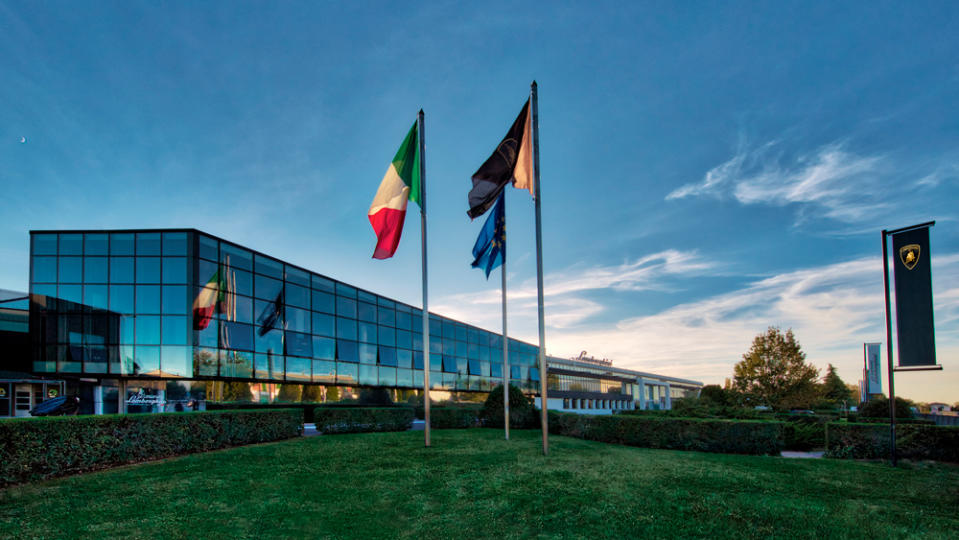
So is Lamborghini keeping the internal-combustion engine and synthetic fuels as a viable option?
The good thing is that we have hybridization coming up now, and we don’t have to make the decision on what follows those cars for two, three, maybe even four years. In terms of technology, in terms of legislation, and in terms of the limits to internal-combustion engines due to emissions regulations becoming tougher and tougher, this is what we have to observe. For daily drivers, we have taken the decision to go fully electric. For the others? We will see.
How does the debut of this flagship dealer location represent the new path for Lamborghini?
It does so in the best possible way. They have more service space, more parking, and a bigger showroom. This already starts the preparation of the future for the Lamborghini brand, in the most important market in the U.S.
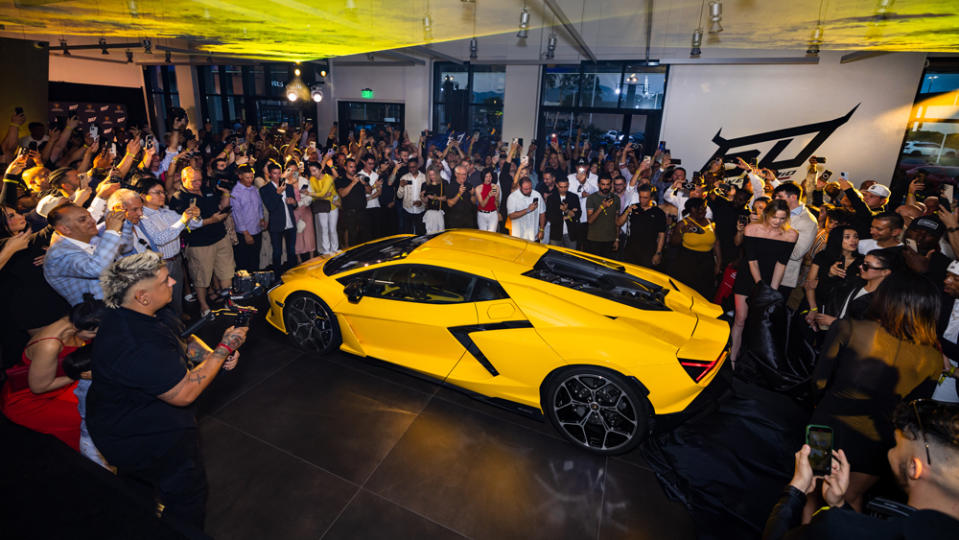
How important is the U.S. market to Lamborghini, and where does California fit in?
The U.S. is by far the biggest market, and California takes 25 percent of the sales and deliveries, with Orange County and Beverly Hills at the top—the climate is favorable for our type of cars. Even if California was a standalone market, it would be number five in the world, so really incredible.
Last year was a banner one for Lamborghini, how is 2023 shaping up?
The first six months were very strong. It’s a bit too early to speak about what is going to happen by the end of the year, but what I can tell you is that we are in the best shape ever. And this is a good thing, because we are also investing big-time into the future.
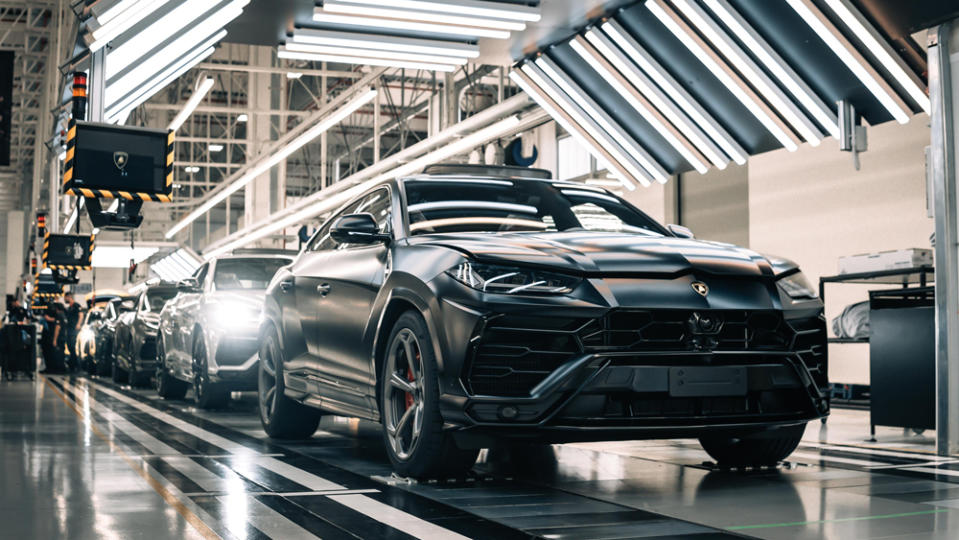
Speaking of that investment, what was the development time for the new plug-in hybrid Revuelto, and what has been the response?
The usual process was longer because this is our first [plug-in] hybrid car and we had to make up our mind as to how to deal with this technology. We didn’t want to be the first ones to do it, but we wanted to be the best one. Having the combination include a V-12 was the first decision, because it’s part of our heritage. We achieved a CO2 reduction by 30 percent in comparison to the predecessor, but with more performance. The response has been great as we have covered two years of production with orders, and will start deliveries by the end of this year.
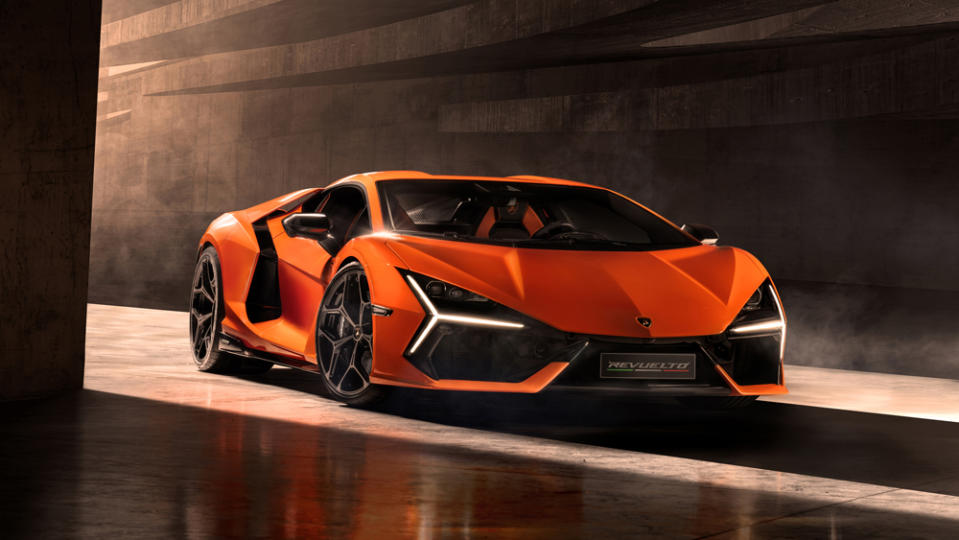
Lamborghini has recently revealed the SC63, its LMDh prototype developed for the top tier of endurance racing. Why now?
The offer was a good one, because we had already started on the idea of hybridizing all of the lineup. The LMDh is for hybrid racing, and so fits perfectly with our intention . . . and we have a budget we can still fulfill. Racing should be a part of Lamborghini for the future.
Why did you decide to go with Ligier as your monocoque-chassis supplier for the SC63?
The main reason is that they are doing it exclusively for us, and they have an expertise in LMP [Le Mans Prototype] racing—they are very committed to Lamborghini.
When will we first see the SC63 in competition?
We will race for the first time at Doha in 2025, and then at Sebring.
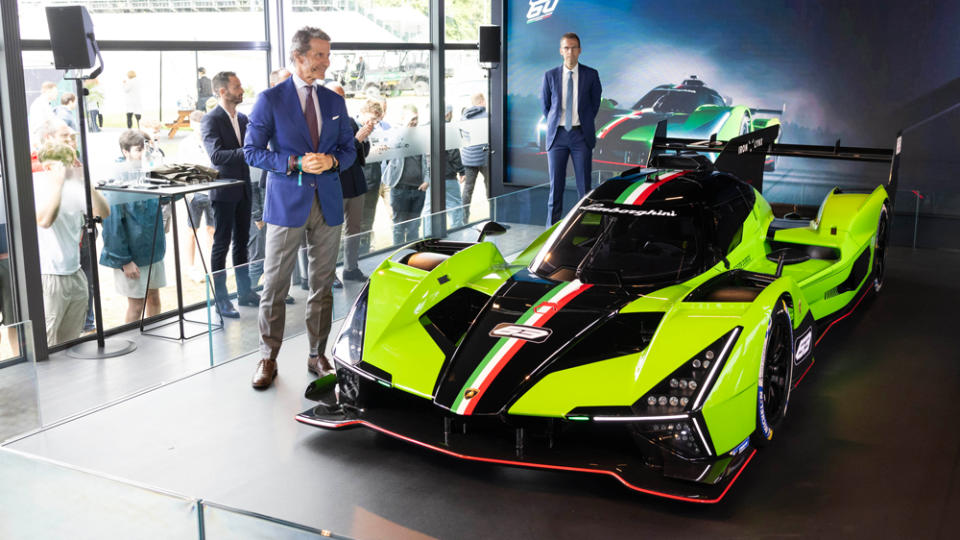
Looking toward the future of Lamborghini, what are you, personally, most excited about?
To make it a success story . . . to be consistent, to be committed, and also convincing.
Are there unexpected markets that are becoming increasingly important for the marque?
China, but it’s not a new one anymore. What is a surprise is South Korea, which is exploding in terms of demand. But if I compare this to a decade ago, all the markets are growing because there are just more people at a young age with enough cash at their disposal to buy those cars. Wealth is growing all around the globe.
With Monterey Car Week coming up in August, does Lamborghini have another model debut planned?
We are going to show a concept car of our fourth model, our first fully electric car. It’s an idea of how the car will look, five years in advance. It will not be the same, but it will give a clear direction.
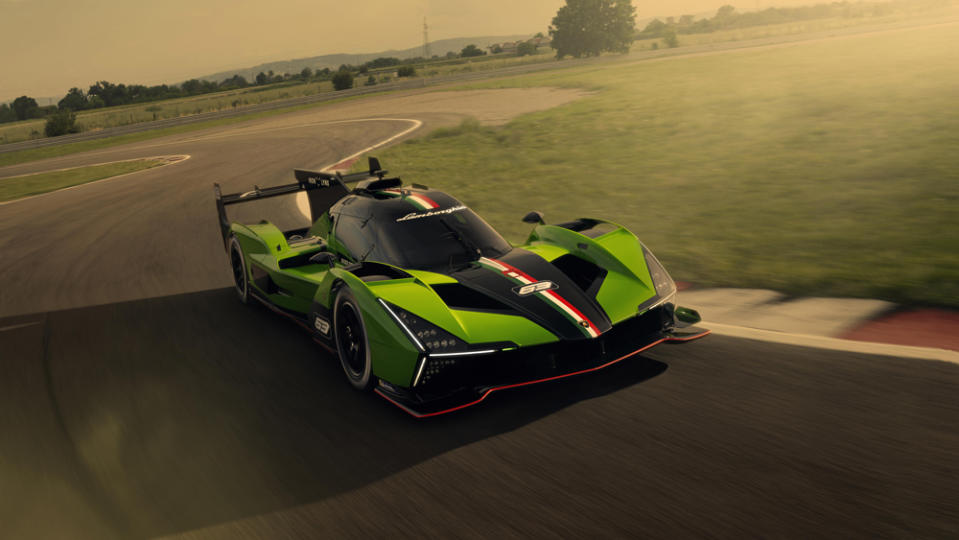
In your opinion, what are the greatest challenges confronting the automotive industry at the moment?
One is that the geopolitical situation is changing constantly, so it’s the question of resources and where to get what so you can continue the transformation to electrification. Then there’s the digitalization of the car, which is one of the biggest challenges we have in front of us, because the car needs to become a rolling [smart] device. And the last thing is autonomous driving. These are the three major issues—electrification, digitalization, and autonomous driving—which go with sustainability. We see all of these things in front of us, and, one by one, I think they can be solved with the right approach.
How do you think founder Ferruccio Lamborghini would react to his eponymous marque’s embrace of change?
I hope that he would be happy about its development. I think he would ask me about the plans for the next decade, and if this was the right thing for a super-sports-car company.
Best of Robb Report
Sign up for Robb Report's Newsletter. For the latest news, follow us on Facebook, Twitter, and Instagram.

